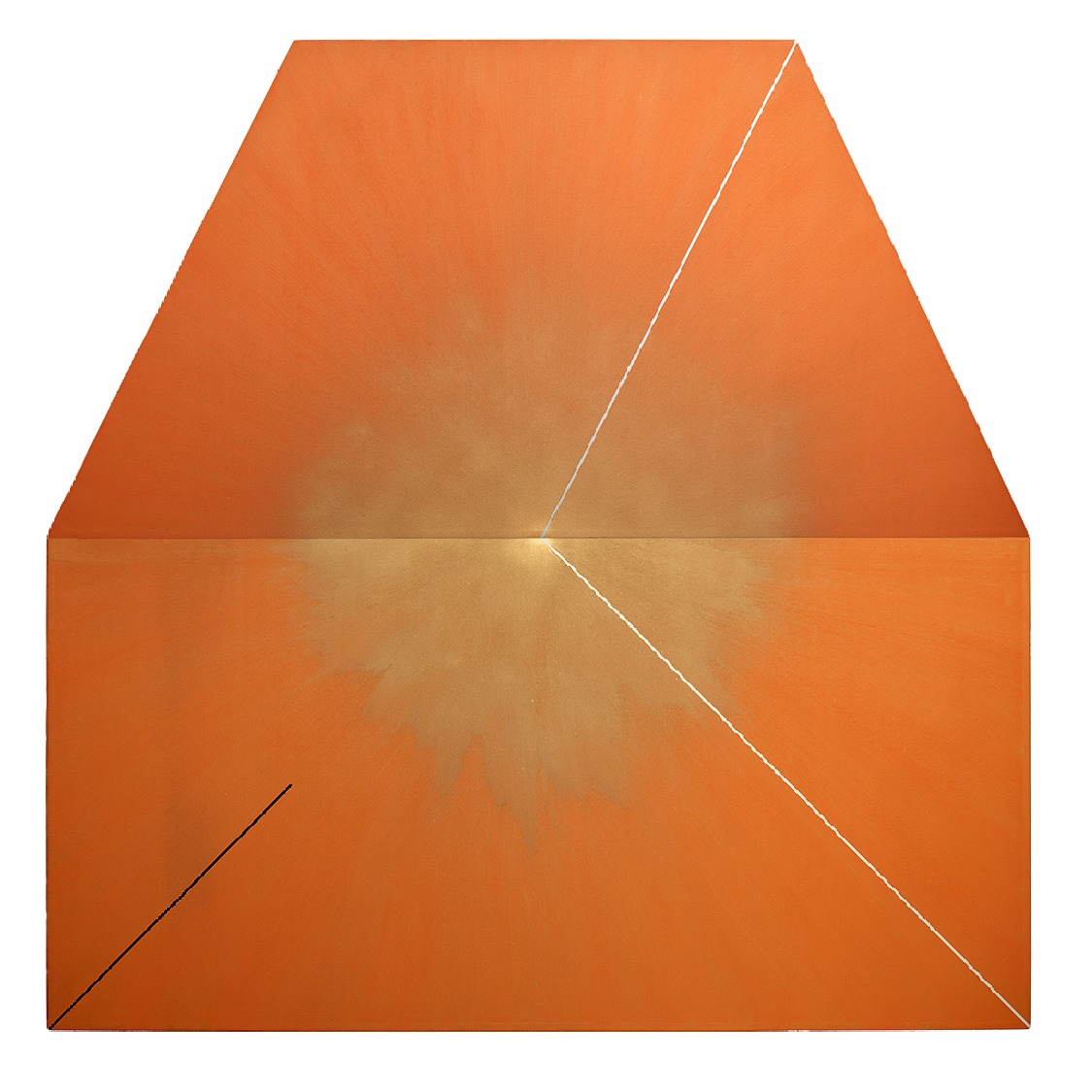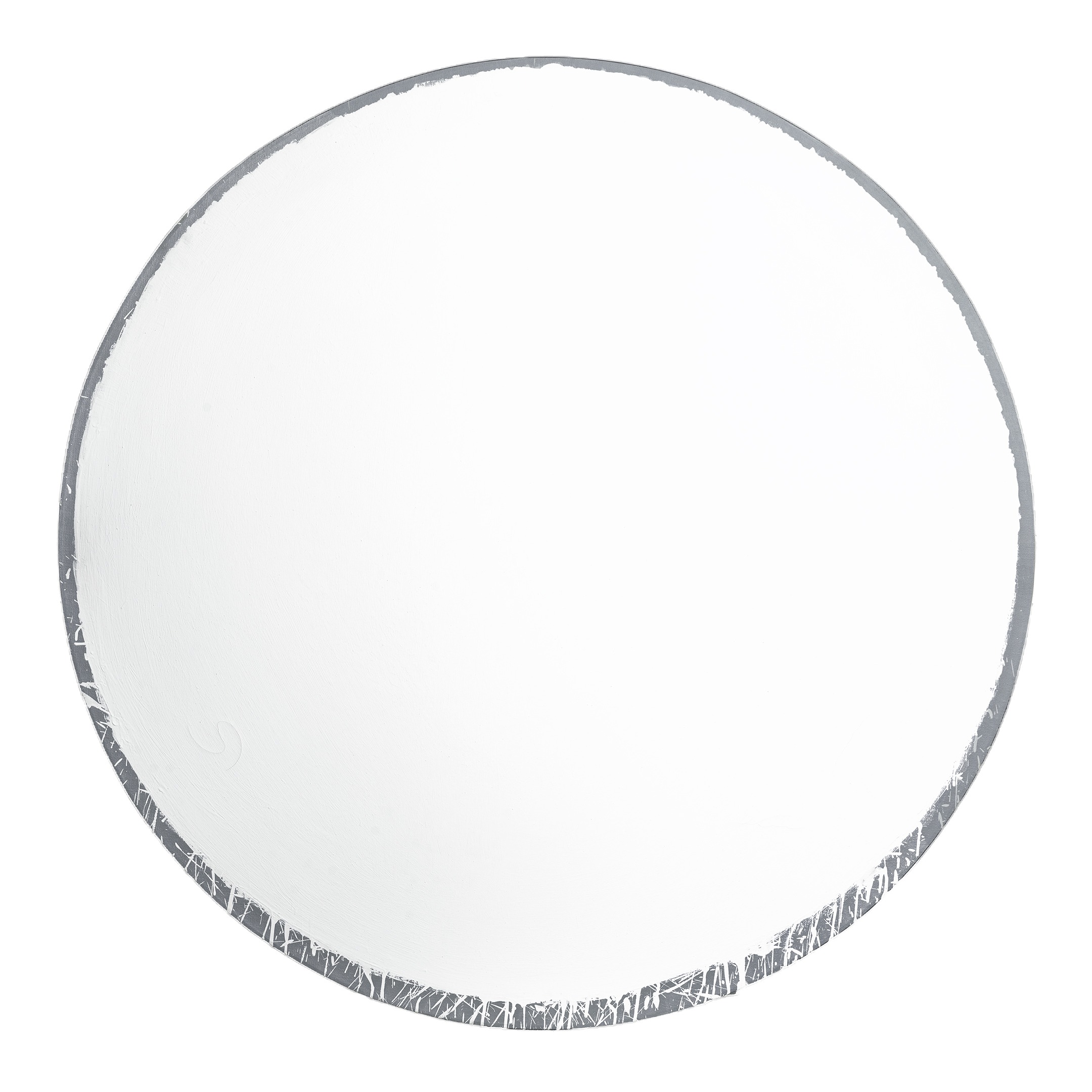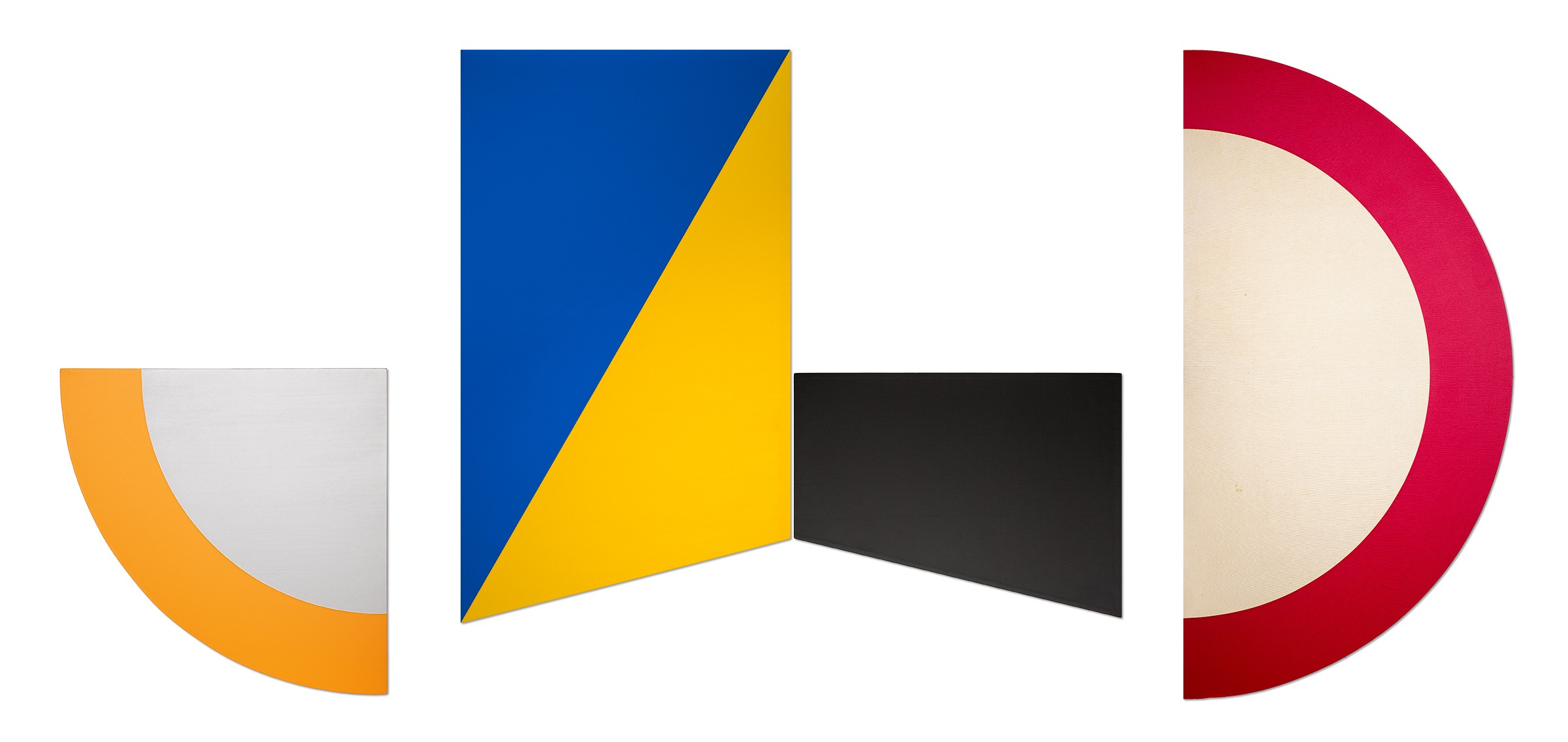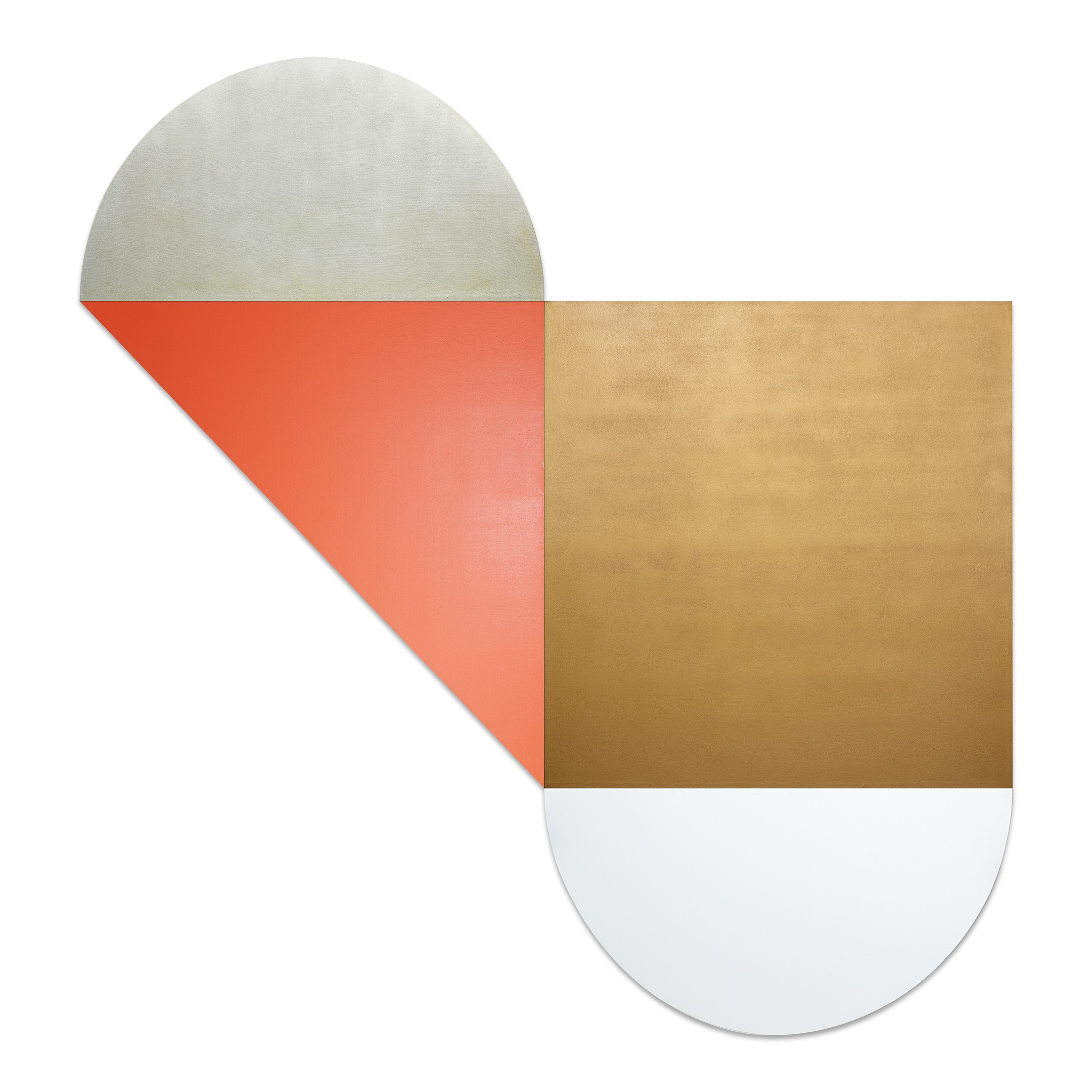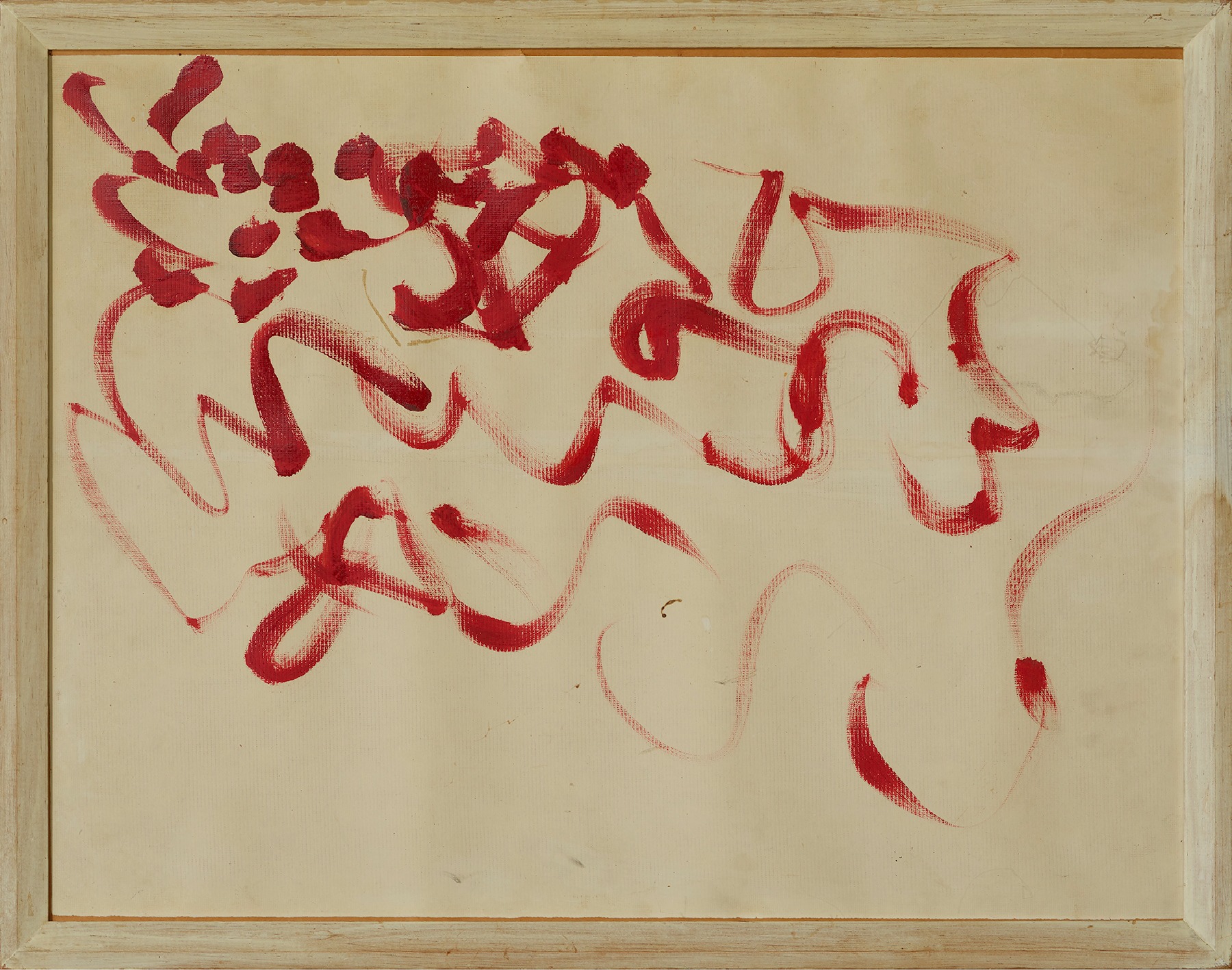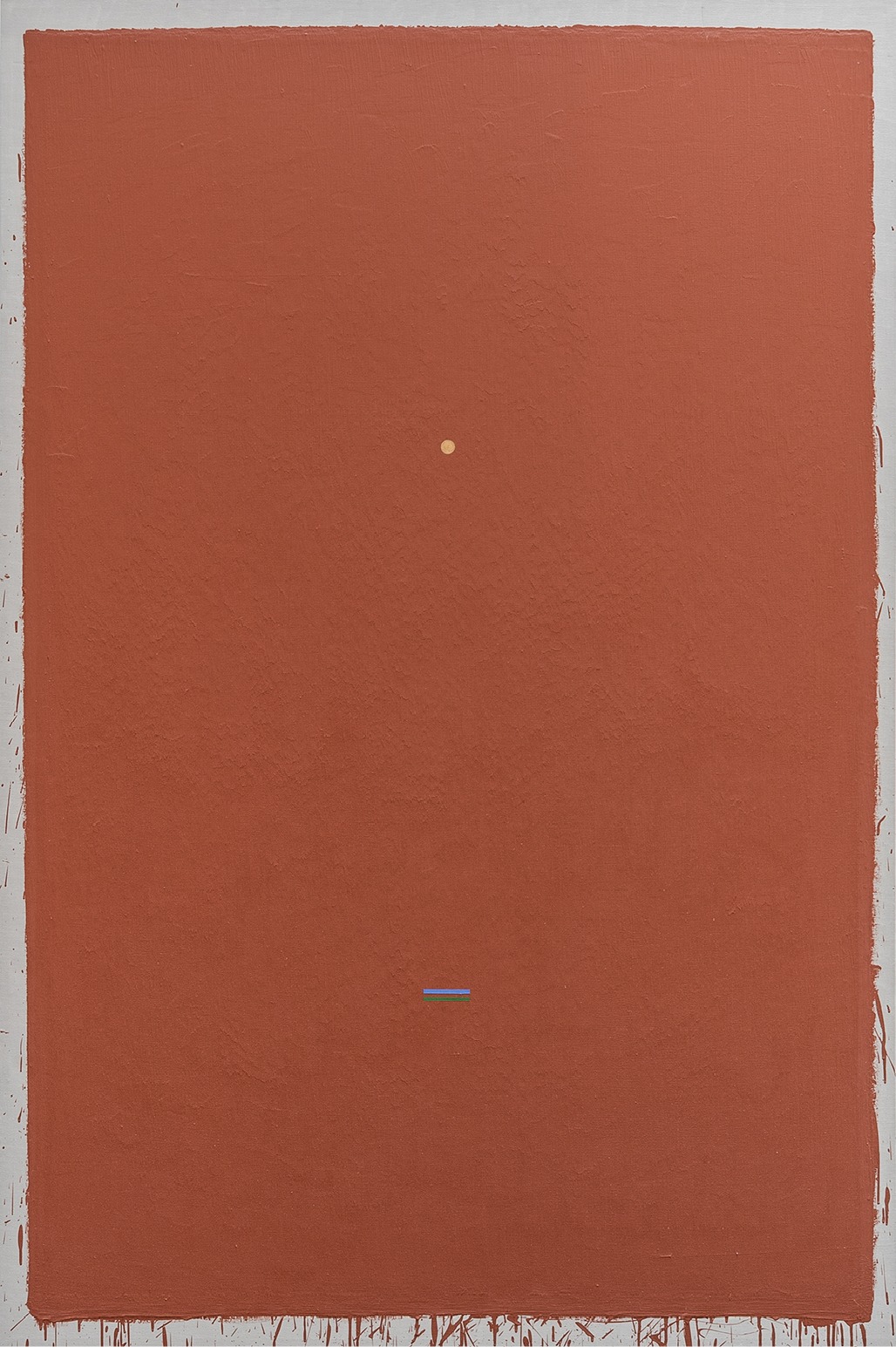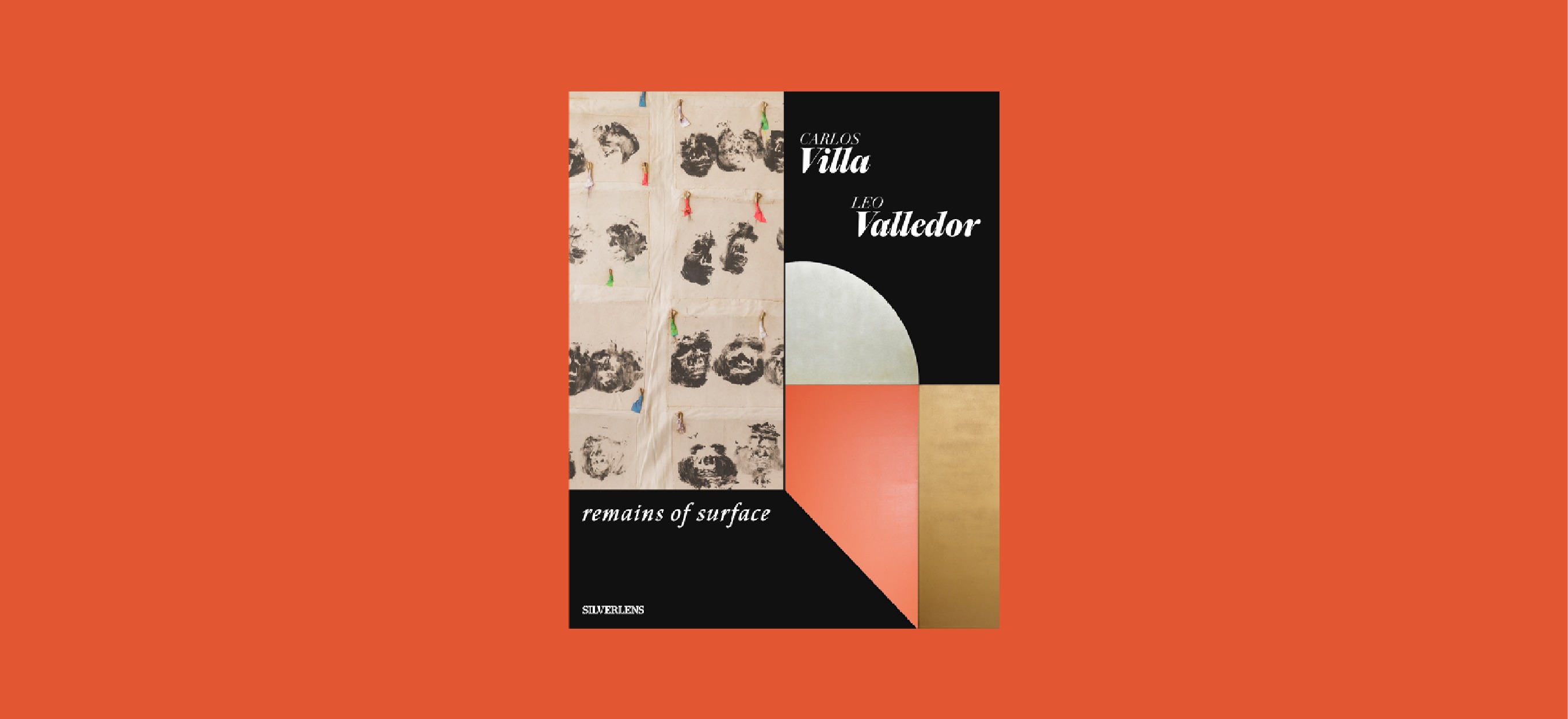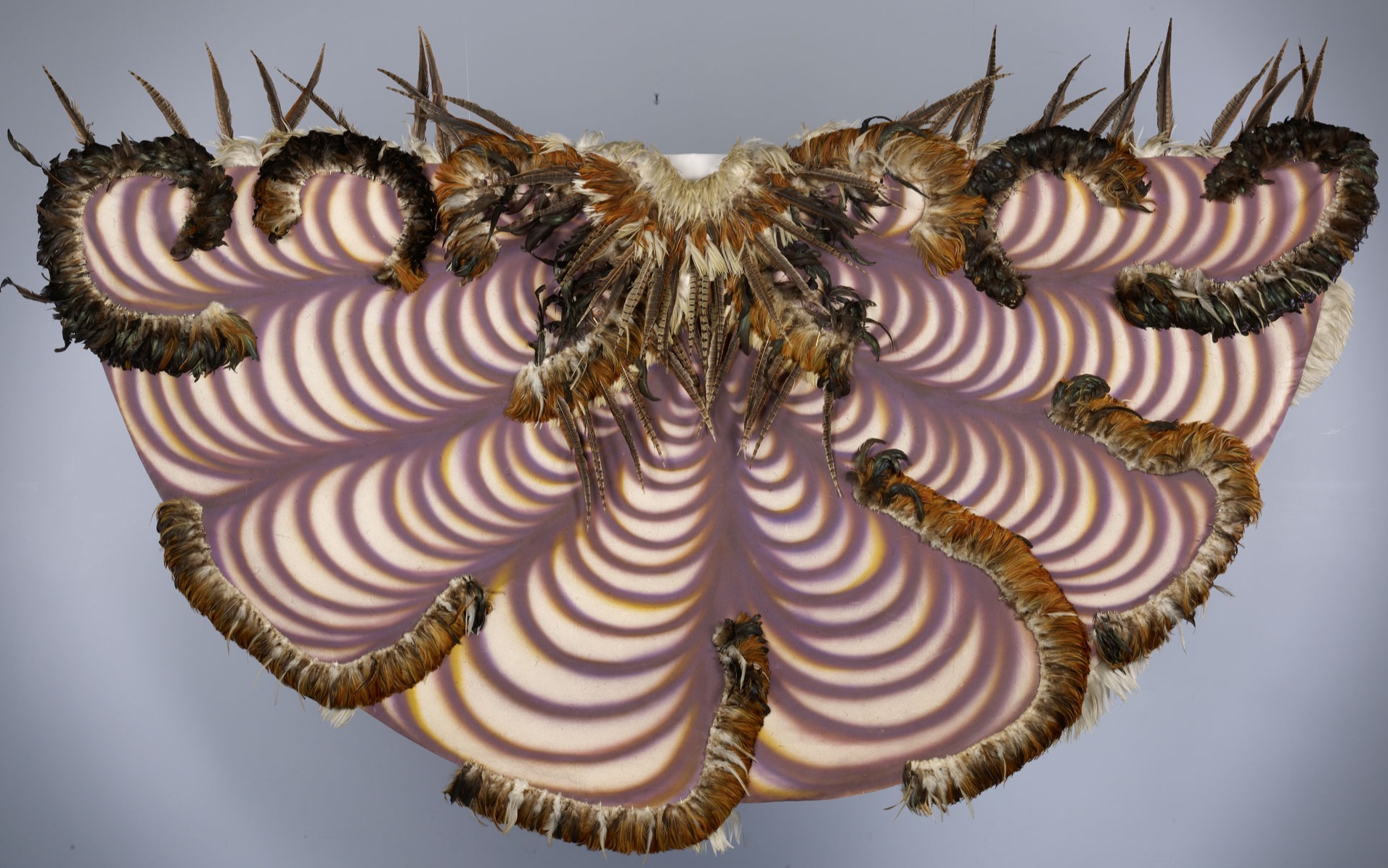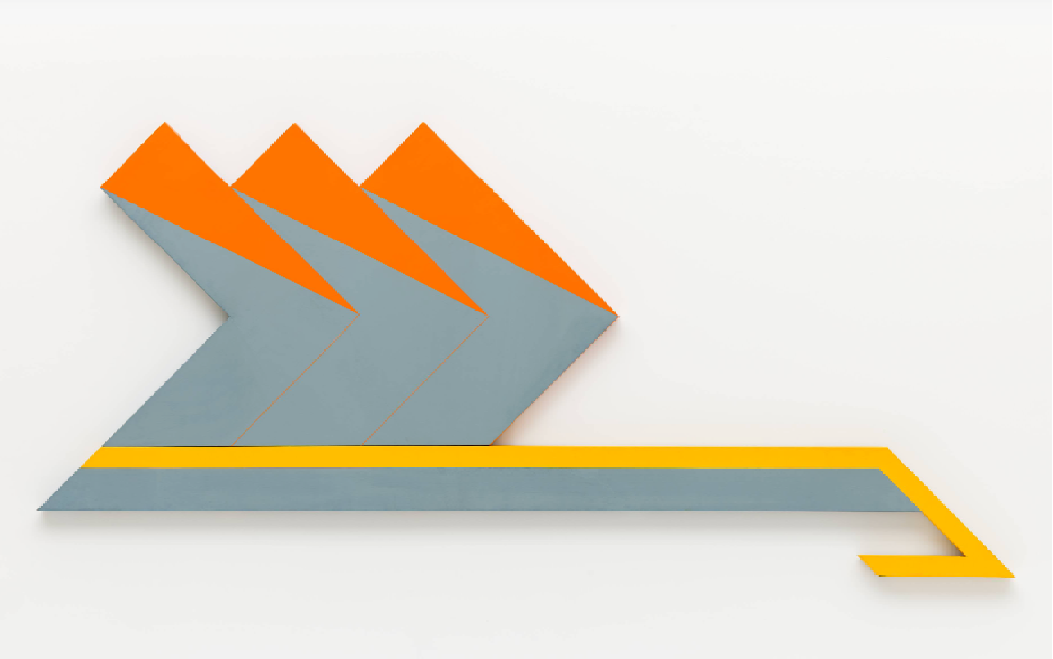
Remains of Surface
Carlos Villa & Leo Valledor
Silverlens, New York
About
To be quietly felt in this constellation of works from Leo Valledor and Carlos Villa is the delicate force of encounter. And like in all constellations whirling in deep matrix and seen from safe distance, this gathering of fragments from the extensive corpus of the artists seems to happen without much strain or effort, holding up well in beautiful contrariety amid intermittent pattern. This is what it seems, and the seeming is actually the becoming, or the possibility itself of forming, as space was never an uneventful realm for Valledor and Villa. It was rarely ceded in the course of their careers and was thus constantly claimed, carved out from the woodwork of privileged property— and always, there would be “worlds in collision,” in the words of Villa.
This exhibition stages the tension between the elements at play in the abstraction of this constellation and the particularities of this sensuous encounter. And through and through, space proves to be the basis of at once un-knowing and re-learning. As Villa reveals: “There is a piece I did in which I took an Itek print of a photograph of myself, and drew patterns on it. Long before I was aware of the words and theories such as ‘recuperative strategy,’ or ‘reinvention,’ I was in the process of becoming. Before that, I was told who I was….through the process of art, I became who I am. Somewhere between the enlarged image of an Asian face and the act of drawing, was space.”
For his part, Valledor thought of “seeing space on the outer edge of the eye.” The coordination of space and the edge through the acuity of the eye was both the ethos and creative creed underlying his radiant oeuvre of largely hard edge abstraction, which would explore the nature of color field and at times the chances, or coincidences, of painting when left to its own devices.
To be discerned in the works of Valledor is a trance-like commitment to color as the fourth dimension, a supplement to the lack in the supposed flatness of painting, which is the persistent neurosis and antisepsis of the art of the modern. Alongside color, the permutation of inventive geometries (zigzag, tondo, trapezoid, among others) exposes the limits, and therefore the closure, of the geometric at the same time that it enables a convergence, not an assimilation, between mass and perimeter in which while they barely touch are tangentially intimate. And when they do touch, the bodies of surface sensitively overlap at the elusive seams. The integrity of this chromatic and minimal scene is tectonic even as the boundaries are variable, sometimes disrupted by slits or cuts between the edges to lay bare the nature of the ground. Alternatively, these slices, which are suspicious of ready information, may well be layers of another pigment, and therefore are not strictly disruptive but rather painstakingly accretive. The relationship between punctual edge and sheer void of handsome color complicates Villa’s trajectory through which the overlooked or the disregarded “other” appears. In Valledor’s imagination, the interval is the very object through which the subject anticipates itself: between margins, across surfaces.
Villa, for his part, thrives on apparent disarray and spends time encrusting the space with residues of flesh, the media of art, and things that allude to diverse wellsprings of making. That said, he also puts up grids within which his serial likeness multiplies fulsomely, almost omnipresently with a vengeance. In many of his works, the motion of the body is palpable, whether in the welter of abstract expressionist flourishes, detailed drawings of either larva or helix, or in the etching of lines onto wood. His sympathies are copious, and his imagination resists the temptation of a fixed or even coherent identity, thus the scene of the art is always quickened by asymmetry, unevenness, density, provocation, and trickster laughter. Villa enlivens the space in the mode of a ritual in which he convenes divergent species of things and persons, and even signs of the otherworldly. With stress exerted by the animist physique to the rhythm of liminal ceremony, he presses himself onto the surface decisively and fills the gap between the receiving ground of art and the body of the citizen-artist coated with pigment, ornamenting the erstwhile neutral plane with the restless energy of the human anatomy— faces, limbs, appendages— and the totems of a lifeworld that need not translate. The art that comes into being is like a continuing workshop, never fully complete but possesses an ethical urgency that is its technical quality. It is incipient in its open-endedness, hospitable in its familiarity, and yet intriguing in its keenness on the future prospects of belonging. In this venture, Villa mingles time zones, geographies, and life cycles to invite everyone to fulfill the obligations of a subjectivity dwelling in, and surviving, difference amid the bricolage of existential travail.
It is in light of Valledor’s faith in tonality and Villa’s insistence on the gravity of the body, and their urgent poetics of securing a place in the milieu, that a space is registered as a presence that vibrates, vital and sanguine, vivid. The formal attributes of color and stroke, the technique of transferring pigment and imprinting body onto cloth or paper, is the ecology itself of painting, the atmosphere of a politics and its practice. Though indebted to the language of abstraction, Valledor’s paintings are not entirely inaccessible iconographically as palette and silhouette point to industrial design and the urban landscape. And that the kinetic configuration of forms ultimately activates a collective feeling and embraces an audience. After all, the artist had aspired to the well-being of a wider world: “If my paintings were read properly it would mean the end of racism, totalitarianism, and man’s inhumanity to man.”
An important aspect of this political and aesthetic form is the physicality of painting, its objectivity as a pragmatic artifact, mutating and broken like in a jigsaw puzzle or in origami. Such a sense of plastic objecthood elicited by the abstraction of Valledor emerges from the subjectivity of the painting agent who is attentive to the facture, essence, and modularity of shapes. On the other hand, in Villa’s pieces, the actuality of found objects— like hair or feather, glass or photograph— indexes the material condition of the gesture of the performing artist, the effect reminiscent of paintings of ancient caves of an earlier geological age. Finally, because the complicities of art are generously internalized by Valledor and Villa, processed by their storied experiences, the ground itself thickens or deepens, as it is embodied; and in turn, the body is inscribed, as both responsive topography and performative soma reveal themselves as symptoms of an intricate interaction and the osmosis of volition and matter. To such intersection comes the necessity of ritual in which Villa evokes spirit and society, and summons another climate of relations through the idiosyncratic process of mixing disparate materials. This he does not only to offer up a novel picture but to orient an engaged audience to an altogether innovative visuality, a different kinship of artistic resources enacted in a verisimilarly hectic drama of exchange. And alighting in the universe of Valledor is the play of atonal music and jazz. Around all this would be the irresistible conviviality, the artists having been advocates in collective initiatives. Villa’s charismatic persona as mentor, writer, activist, and convener of meetings like Other Sources and Worlds in Collision and Valledor’s crucial role in the Park Place coterie would feed into the universality of imperatives held out for a world in dire need of turning for the better.
At the heart of the nexus between Valledor and Villa is the contingency that inspires artistic speculation and the life of whatever stuff is worked through. The situatedness of the bodily traces of Villa and the leaks and drips of Valledor’s paintings collecting at the hem of color’s armature testify to this contingency. From this arises the notion of remains, evidence to a certain extent of Villa’s labor, laid out on a slate that absorbs biological secretions and expenditures of a happening, a cross between a modernist collage and a primeval palimpsest. On another level, the deed of remaining hints at a continuum of being and becoming present, of inhabiting the shelter of Valledor’s intense color and ensuring the stamina for an everyday and timeless struggle, rendered more exigent by faint dots and bars, slight clots of paint, incandescent bursts, and occasional modulations.
The last, and only time, Valledor and Villa were presented together was in 2006. Much has changed in the intervening years, even as the striving for space and solidarity among their kindred has not ceased. Seeing them in this exhibition marks an important moment in the history of art and migrancy, emerging from San Francisco and New York and subtly inflecting the narratives of modernism elsewhere. A robust Philippine heritage was part of the aesthetic unconscious of the artists, informing their talent and enhancing the dynamism of a worldly, ingenious sensibility at home with structure as well as happenstance. With their art permeating the public sphere of the contemporary sensorium, a different constellation of the modern elaborates through abstraction and assembly. From here, Villa and Valledor would propose a further context beyond a binary that usually belabors critique, deftly undermining the norm not by hastily negating it but complexifying the critical action and the desire for the negative object. They would therefore, in the gospel of Villa, “re-historicize” both apparatus and utterance in patient abstraction and persuasive performance-- all in the face of sometimes unyielding antagonisms and, surely, refusals of the “other sources.”
- Words by Patrick Flores, courtesy the Estates of Carlos Villa and Leo Valledor
About Carlos Villa
Carlos Villa (1936 - 2013) was a San Francisco-born visual artist, grass-roots activist, curator, author, and 40+ year educator at the San Francisco Art Institute, among other Bay Area institutions. His artistic origin story is often attributed to a pivotal moment in his early education, when a professor told Villa, “Filipino art history does not exist.” A decade later, he abandoned a career in minimalism to begin his ground-breaking practice of culling materials from indigenous cultures across the globe. He collided feathers, bone, and physical body prints to create strangely-human works that challenged colonial perspectives and laid radical claim to a cross-cultural, diasporic identity. It was Villa’s legacy to render Filipino art history visible and establish a foundation for American artists to come.
In 2022, Villa received the first-ever major museum retrospective dedicated to the work of a Filipino American artist, which toured bi-coastal from the Newark Museum of Art to the San Francisco Art Institute and Asian Art Museum. As an educator, he developed a renowned curriculum that merged critical race theory and active volunteerism. He mentored notable students such as Kehinde Wiley, Iona Rozeal Brown, and Paul Pfeiffer, among many others. Villa additionally founded the highly influential symposia series "Sources of a Distinct Majority," which brought together community and cultural leaders. Esteemed speakers and collaborators included Angela Davis, bell hooks, Ruth Asawa, Martin Puryear, and Jaune Quick-to-See Smith. Through his multifaceted work, Villa challenged the established canon, aiming to rewrite history to faithfully reflect and acknowledge the marginalized. A solo presentation of Villa’s work will be on view at Silverlens’s booth at Frieze London 2023.
About Leo Valledor
Leo Valledor (1936 - 1989) was a San Francisco-born, New York-based abstractionist and founding member of downtown Manhattan’s trailblazing Park Place Gallery. The space was an iconoclastic artist collective and exhibition venue founded by ten emerging artists, including Valledor, many of whom are now recognized as among the most influential Modernists in American history, including Dean Fleming, Mark di Suvero, and Robert Grosvenor, among others. It was a space for collaborative experimentation where the cohort advanced what became genre-defining techniques of geometric abstraction and new concepts of space. It provided a venue to show their friends, also then-emerging, now-iconic artists, such as Sol LeWitt, Eva Hesse, and Donald Judd, and more.
Playing with dimensionality and flatness, Valledor used geometry to shape the canvas, employing optical illusions or unusually shaped canvases to engage the wall space. Contextualized through the work of Ellsworth Kelly, Barnett Newman, Leon Polk Smith, and Frank Stella, Valledor’s work was in the vanguard of the color-field and minimalist aesthetics, but is characterized by a unique use of space, shape, and color. Inspired by jazz music, Valledor often connected his work to a myriad of broader cultural and personal references through the titles of his pieces. At the age of nineteen, Valledor had his first solo show, Compositions, featuring his expressionist “Black and Blue Series” at the historic Six Gallery in San Francisco. The artist has exhibited at the San Francisco Museum of Modern Art, Daniel Weinberg Gallery, M. H. de Young Memorial Museum, and the Los Angeles Museum of Contemporary Art. Valledor’s works are in collections across the country from The Whitney Museum of American Art in New York, to the San Francisco Museum of Modern Art, to the Philadelphia Museum of Art.
Installation views
Carlos Villa
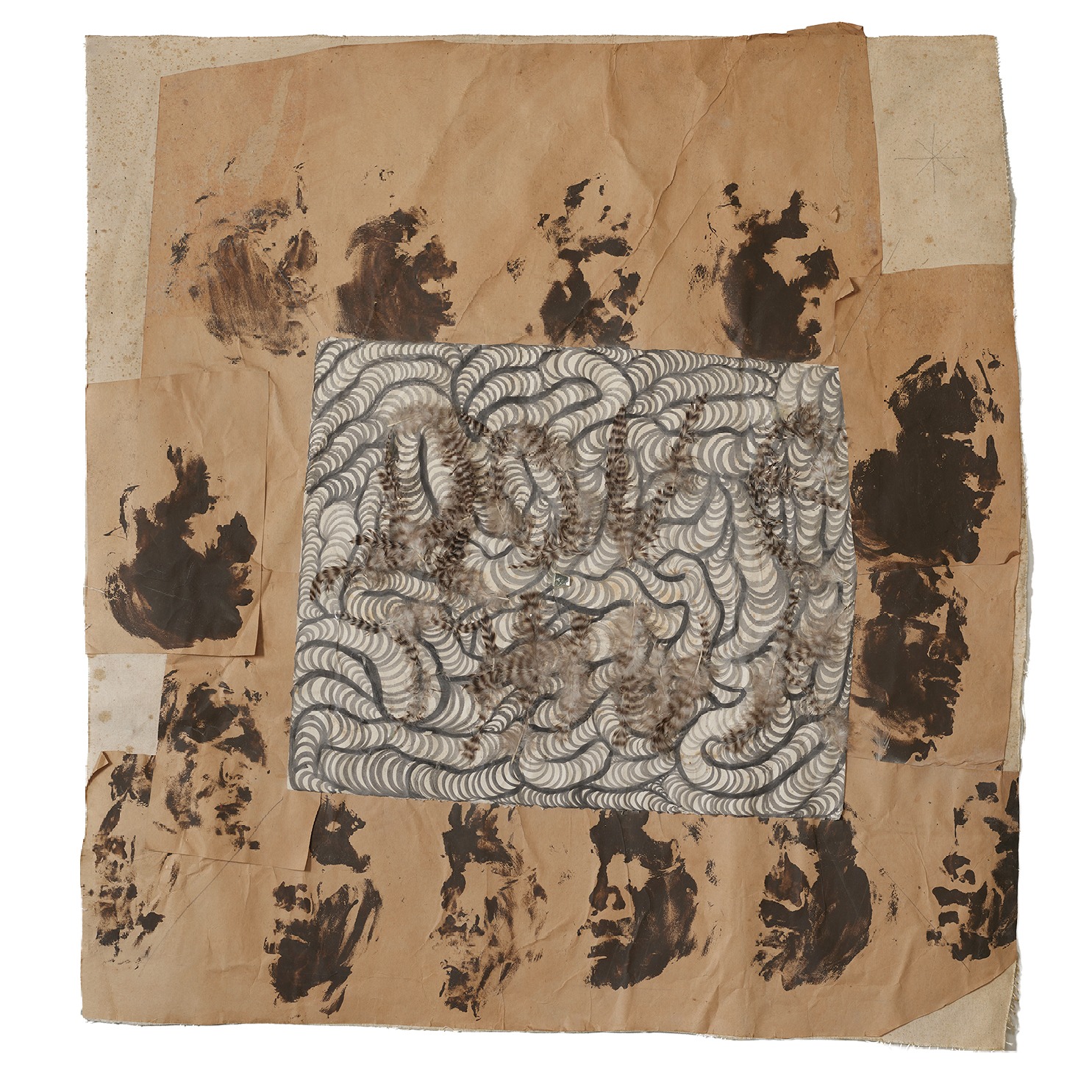
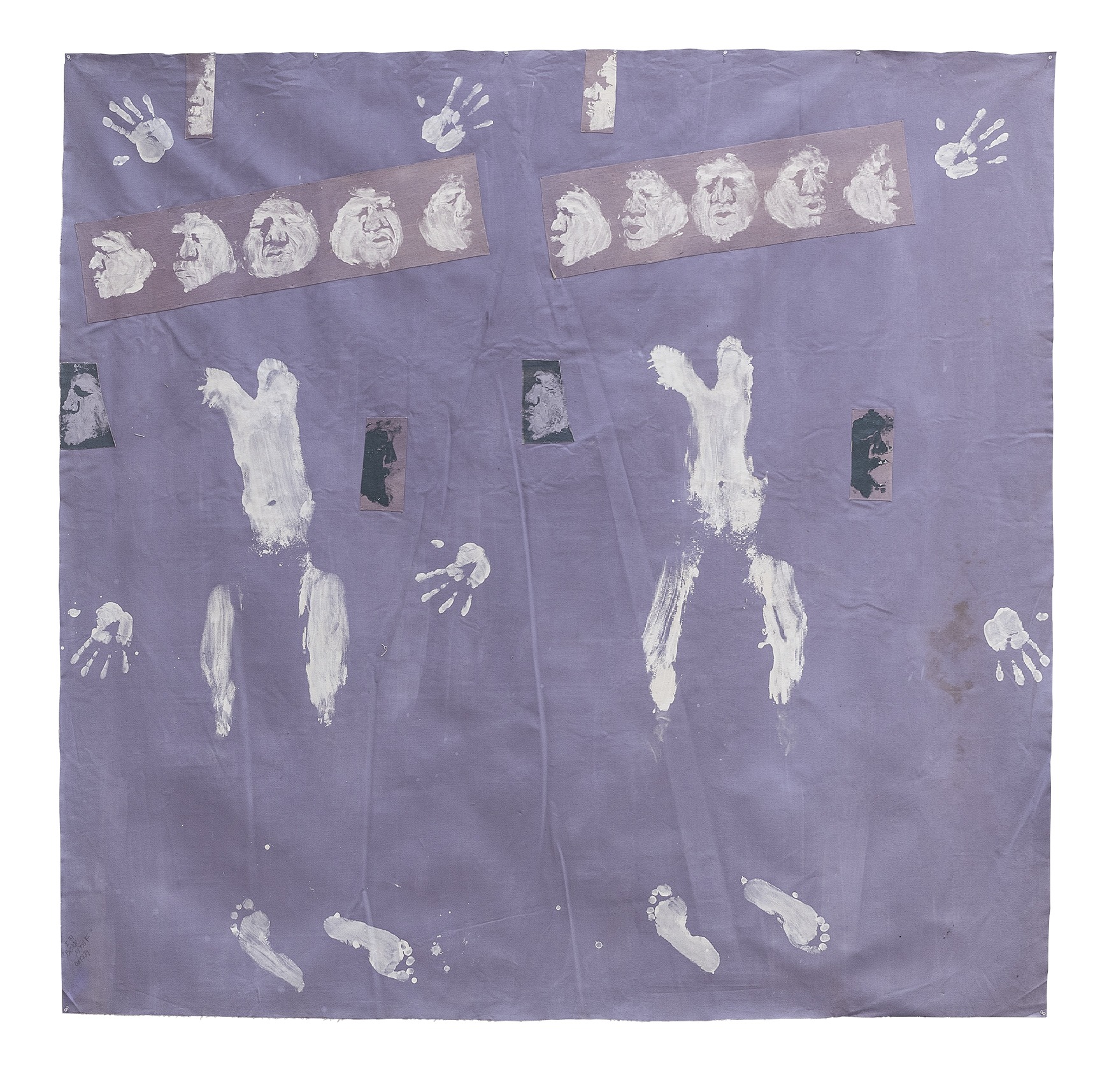
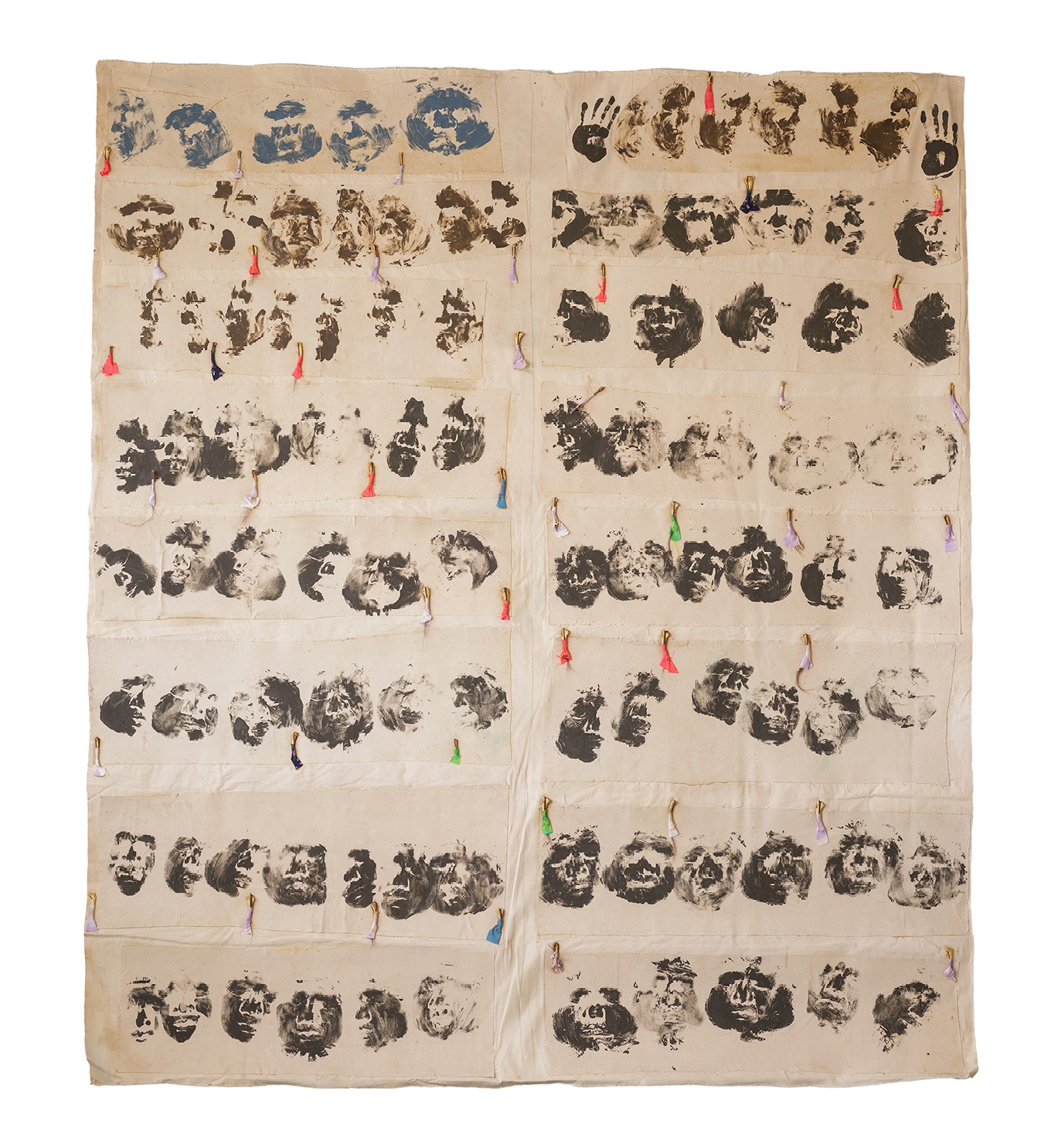
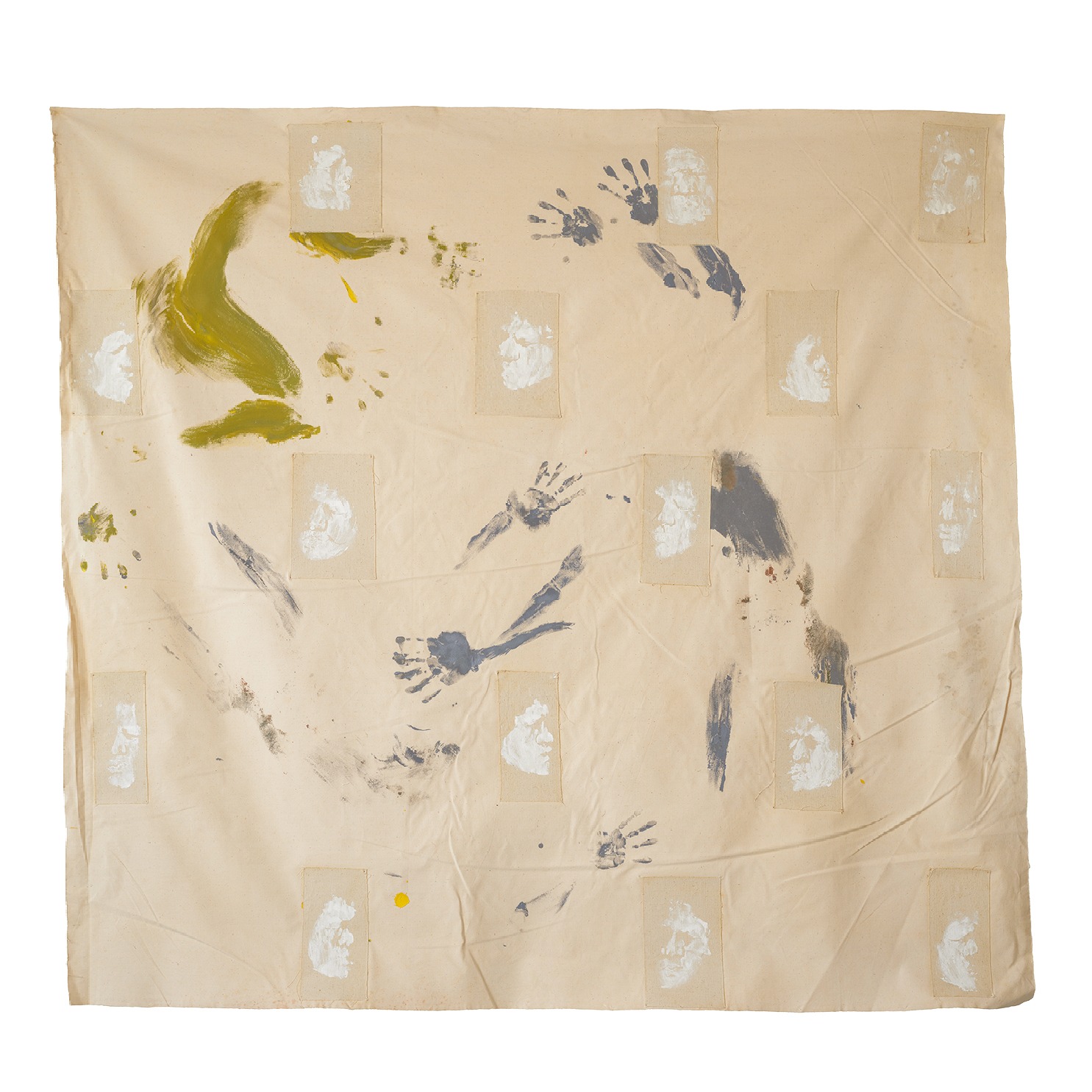
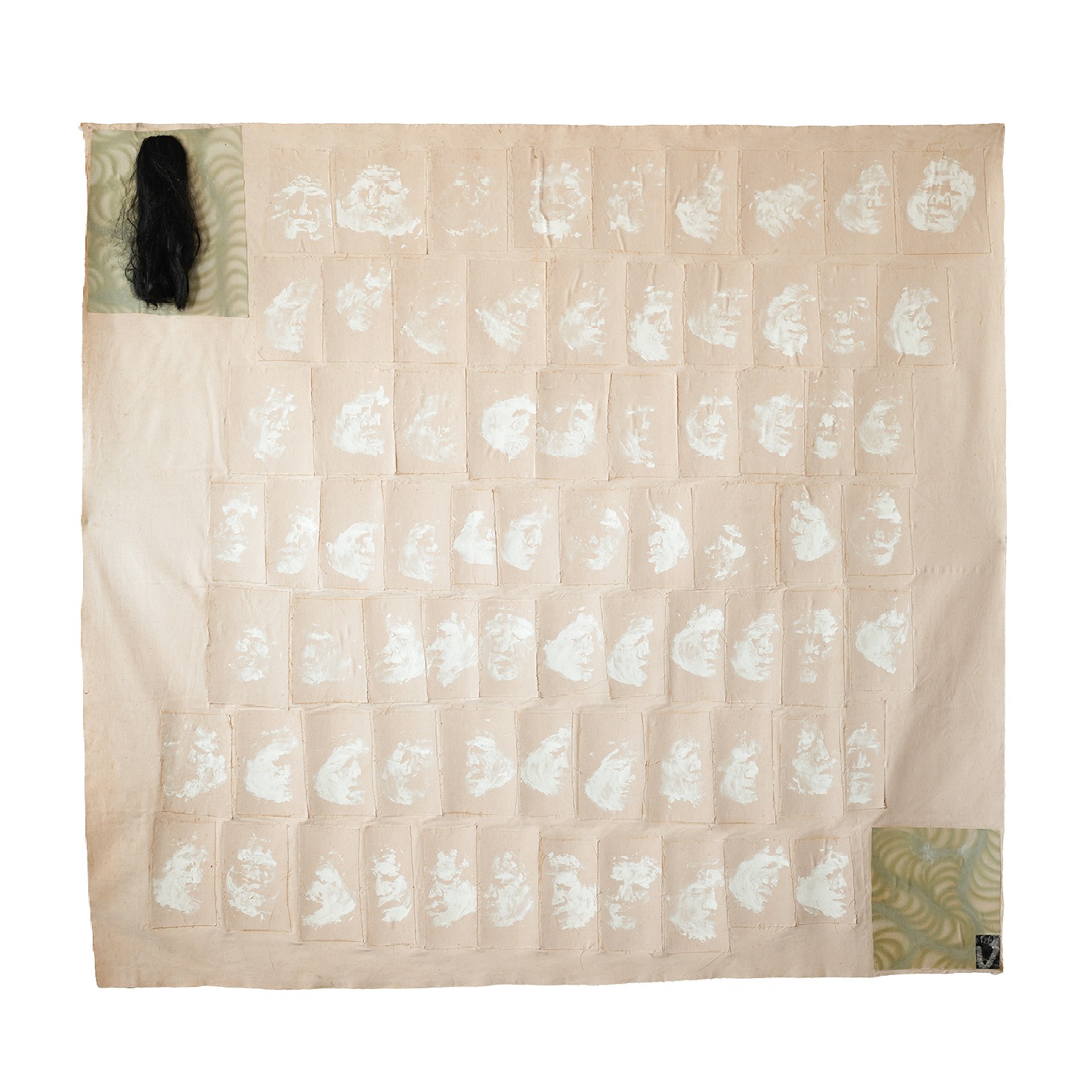
Leo Valledor
